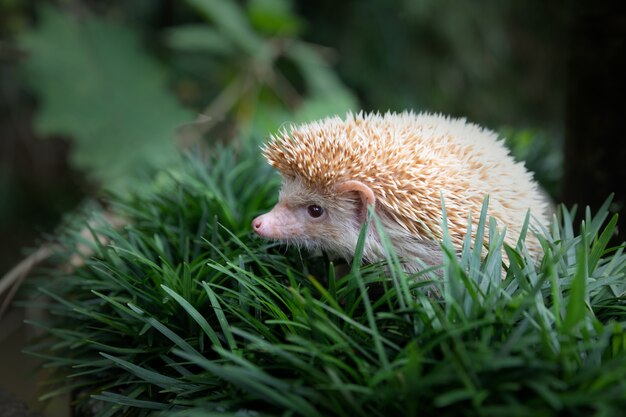Hedgehog Facts – Discovering the Fascinating World of These Quirky Creatures

Hedgehogs are small, adorable creatures with prickly spines.
Hedgehogs are nocturnal animals, which means they are most active at night.
There are 17 different species of hedgehogs found around the world.
A group of hedgehogs is called an array.
Hedgehogs have poor eyesight, but they rely on their sense of smell and hearing.
Hedgehogs are insectivores, which means their diet consists mainly of insects.
Hedgehogs have around 5,000 spines on their body for protection.
Hedgehogs hibernate during winter to conserve their energy.
The average lifespan of a hedgehog is around 4-7 years in the wild.
Hedgehogs roll into a tight ball when they feel threatened to protect their soft bellies.
Hedgehogs can swim, but they are not strong swimmers.
Hedgehogs are solitary animals, preferring to live alone.
Hedgehogs have a natural immunity to most snake venom.
The smallest species of hedgehog is the African Pygmy hedgehog.
Hedgehogs communicate through a combination of sounds, including grunts, clicks, and snuffles.
Hedgehogs have a keen sense of smell and can detect food from a distance.
Hedgehogs are excellent climbers and can scale fences and walls.
Hedgehogs have a thick layer of fat to keep them warm during colder months.
Despite their spines, hedgehogs are actually quite gentle and can be kept as pets.
Hedgehogs are known for their unique ability to roll into a ball, making them a memorable sight in nature.
Hedgehog Facts – Discovering the Fascinating World of These Quirky Creatures part 2
Hedgehogs are great for natural pest control, as they eat harmful insects like slugs and snails.
The spines on a hedgehog’s back are made of keratin, the same material as our hair and nails.
Hedgehogs can run at a speed of up to 6 miles per hour.
Hedgehogs are able to lower their body temperature to conserve energy during hibernation.
Hedgehogs have a specialized muscle that allows them to close their ears completely, protecting them from debris.
Hedgehogs are prone to obesity if not fed a balanced diet, as they have a natural tendency to overeat.
Hedgehogs have a musky odor that helps deter potential predators.
Hedgehogs are a protected species in some parts of the world due to declining populations.
The hedgehog’s spines are hollow, making them lightweight and efficient for movement.
Hedgehogs are capable of recognizing individual scents, which helps them identify other hedgehogs.
Hedgehogs are naturally immune to certain diseases, making them relatively resilient creatures.
Hedgehogs have a unique mating ritual that involves a dance-like courtship display.
Hedgehogs have a specialized technique for eating poisonous or venomous prey without being harmed.
Hedgehogs are known to make grunting sounds when they are content or relaxed.
Hedgehogs have a flexible spine that allows them to curl into a ball without injuring themselves.
Hedgehogs have a small, pointed snout that helps them sniff out food in narrow crevices.
Hedgehogs have five toes on each foot, with sharp claws for digging and climbing.
Hedgehogs are surprisingly good swimmers and can cross bodies of water using their buoyant spines.
Hedgehogs have a strong bond with their mothers, who care for them until they are independent.
Hedgehogs have an excellent memory, allowing them to remember safe routes and food sources.
Hedgehogs are popular garden visitors in the UK, where they help control pest populations.
Hedgehogs have a high tolerance for pain due to their thick skin and spiky exterior.
Hedgehogs have a natural instinct to dig, often creating burrows as their homes.
Hedgehogs are not native to the Americas but were introduced as exotic pets in some regions.
Hedgehogs are fascinating creatures that deserve our protection and respect in the wild.

